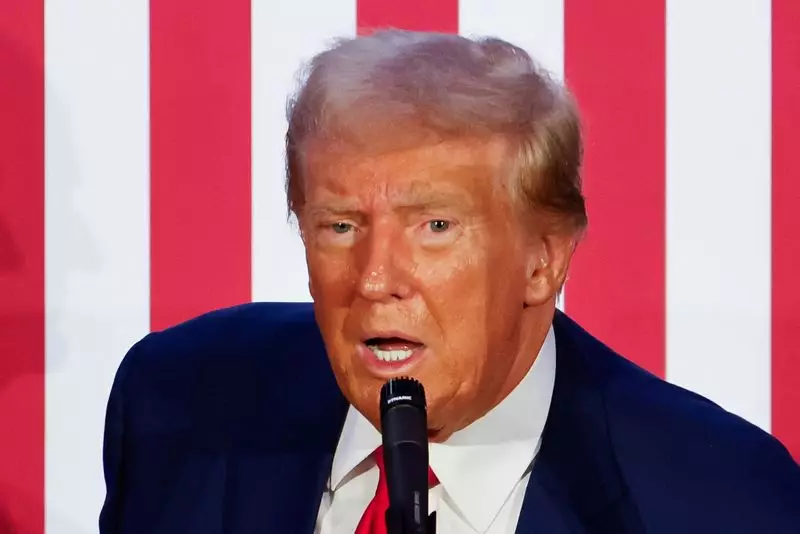The economic landscape in the United States is subject to dramatic shifts based on presidential policies, and recent proposals from Donald Trump concerning tariffs have raised significant concern among analysts and market observers alike. As Trump aims for a second term, his initiative to impose steep tariffs on imports could have lasting ramifications on companies listed in the S&P 500 and the broader economy.
Trump’s proposal includes hefty tariffs ranging from 10% to 20% on all foreign goods and a staggering 60% tax on imports from China. The former president claims these measures are essential to protect American jobs and rectify unfair trading practices that have led to substantial trade deficits, particularly with countries such as China and those in the European Union. Trump’s previous term witnessed an escalation in trade tensions with Beijing, characterized by a suite of tariffs that targeted Chinese imports. The Biden administration has largely maintained these tariffs, highlighting a continuity of trade policy that extends beyond partisan lines.
The Projected Impact on Corporate Earnings
Analysts from Barclays have analyzed the potential consequences of Trump’s tariff strategy and predict a 3.2% decline in S&P 500 earnings should these tariffs come to fruition. This projection is based on the understanding that the direct impact of tariffs can seem negligible at first glance; however, the broader economic implications—such as increased production costs and reduced growth—could create significant headwinds for corporate profitability. The analysts emphasized that sectors heavily reliant on global supply chains—specifically materials, discretionary goods, industrials, technology, and healthcare—are particularly vulnerable.
The anticipated outcome is not just a drag on earnings; tariffs may lead to inflationary pressures as businesses pass on the costs of tariffs to consumers. This inflation could create a complex scenario for the Federal Reserve, which has been under pressure to adjust interest rates in response to economic conditions. A rise in prices could compel the Fed to maintain high borrowing costs initially, although the analysts forecast eventual easing if economic activity slows.
Furthermore, the proposed tariffs might instigate retaliation from trade partners, further exacerbating the situation. The Barclays analysis noted an additional 1.5% decrease in corporate earnings if countries implement counter-tariffs. Overall, the trade environment could become increasingly hostile, leading to supply constraints and fueling inflation throughout the economy. The dual pressures—an inflationary backdrop alongside potential economic contraction—could force the Federal Reserve into a more aggressive stance on interest rate adjustments.
In this context, Trump’s plan does not exist in a vacuum; it is intricately linked to the broader financial and legislative environment in Washington. Regardless of whether Trump or his opponent, Kamala Harris, secures victory in the upcoming election, the implications of a divided Congress seem inevitable. This political landscape may limit the new president’s ability to enact sweeping reforms through traditional legislative channels, necessitating a reliance on executive actions and regulatory maneuvers. Given that tariffs are one area where the president can act unilaterally, this may guide Trump’s approach to foreign trade should he return to office.
Ultimately, Trump’s proposed tariffs represent a bold yet risky gamble for the U.S. economy. While aimed at revitalizing American manufacturing and benefiting the workforce, the unintended consequences could lead to a precarious economic situation characterized by higher consumer prices, potential inflation, and weakened corporate earnings across critical sectors. The ramifications of such a policy are not only significant for corporate entities but also for everyday American consumers, who might bear the brunt of increased costs. As the 2024 elections loom, the implications of these tariff proposals will undoubtedly remain a focal point of economic discourse, warranting careful consideration from all stakeholders involved in the U.S. economy.

